Chesapeake bay is the biggest estuary (mass of water where freshwater from rivers and brine merge) in the United States of America and one of the biggest in the world.
It is known for its seafood, such as oysters, blue crabs, clams, etc., with tourists rolling in yearly for crabbing, kayaking, fishing, and countless other events.
Although home to diverse exciting wildlife, some of the world’s deadliest animals exist within the estuary and its surroundings. The most dangerous animals in Chesapeake Bay include the copperhead snake, bull shark, deer tick, jellyfish, black bear, etc.
This article will discuss extensively 11 of the deadliest animals to avoid in the Chesapeake Bay and some wildlife safety tips you need to know.
What are the Most Dangerous Animals In Chesapeake Bay?
1. Copperhead Snake

- Scientific name: Agkistrodon Contortrix
- Classification: Reptilia
- Habitat: Hillsides
- Diet: Carnivores
- Conservation Status: Not Threatened
The Copperhead snake is the most common in the Eastern United States, including Arkansas, Missouri, and Alabama.
These reptiles have one of the most poisonous snake bites in the Chesapeake Bay. Copperhead snakes can be found in nearly every habitat, although they like to live near rivers and streams.
They enjoy densely forested areas with garbage, foliage, and vines. Their patterns and coloring help them blend in with decaying leaves on the forest floor.
On a warm summer night, it is not uncommon to see a Copperhead snake crossing a road. Many are killed by motor traffic since these snakes have a propensity to freeze when threatened.
The Copperhead snake is poisonous, yet its bite is rarely fatal to people and is normally non-aggressive.
The snake’s venom delivery mechanism is effective, with long fangs positioned at the front of the jaw that swivels back to allow the snake to close its mouth.
In a recent report, a woman experienced intense pain and swollen foot and toes when a Copperhead snake bit her.
2. Bull Shark

- Scientific name: Carcharhinus Leucas
- Classification: Cartilaginous Fishes
- Habitat: Warm shallow waters
- Diet: Carnivores
- Conservation status: Near threatened
The bull shark is a predatory shark found in coastal areas; it has the finest skill among sharks, being able to migrate between freshwater and saltwater.
The violent character of this shark and its reputation for striking its prey before attacking gave origin to its moniker.
It is linked to sandbar sharks. However, it is more dangerous. They feed on both fish and other sharks, particularly young sandbar sharks.
Although bull sharks are largely blind, they are drawn to flashy objects. As a result, it’s best to take off any jewelry before swimming, as it may attract them. They are also active during sunrise and sunset.
3. Jellyfish
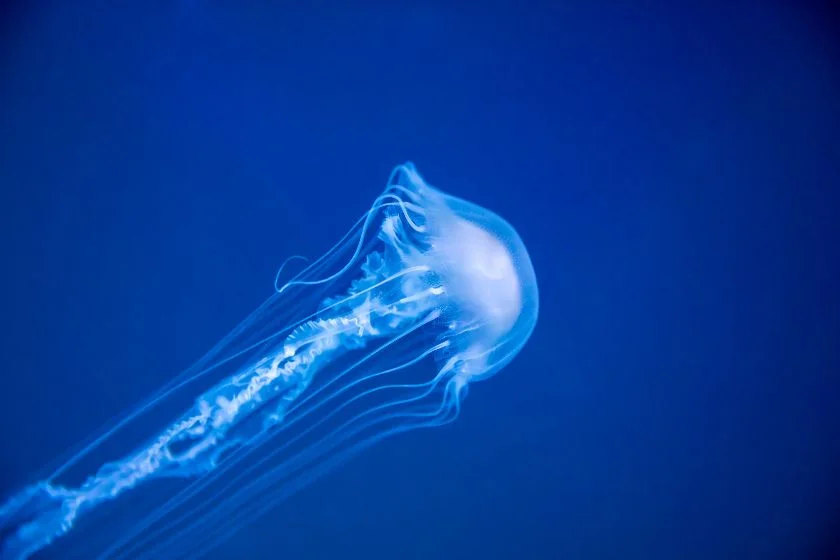
- Scientific name: Scyphozoa
- Classification: Cubozoa
- Habitat: Deep ocean
- Diet: Carnivores
- Conservation status: Least concern
Also known as sea nettles, they have the definitive medusa-like physique variation, a bell physique, and their tentacles attach to the bell.
They feed on tinier jellyfish and zooplankton. Their tentacles contain pricking sections that they employ in paralyzing their victim during hunting.
The venom from sea nettles is not enough to take a man’s life, excluding severe allergy reactions.
With their stings notably painful, a close encounter with the jellyfish is usually an uncomfortable experience.
In the Chesapeake Bay area, around 1 to 2 million stings occur annually. If you are stung by one, applying ice packs or hot water is the best way to reduce the swelling and also serves as an effective painkiller.
4. North American Porcupine
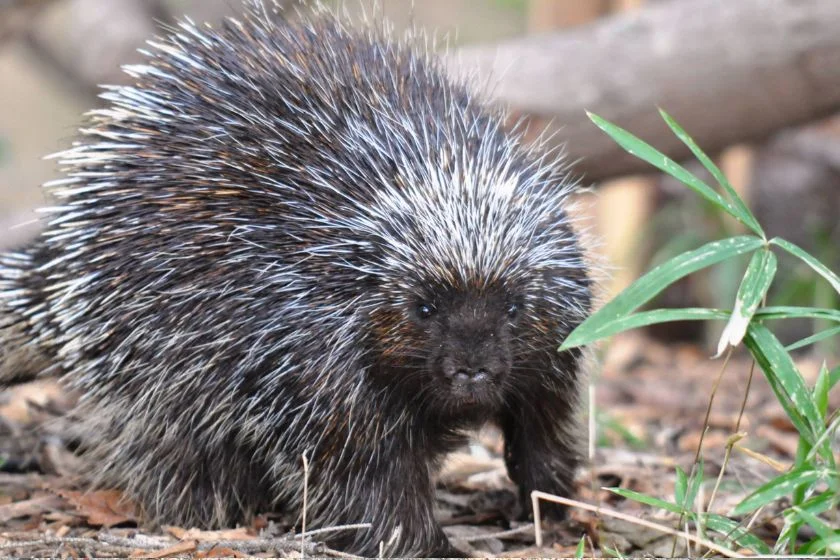
- Scientific name: Erethizon Dorsatum
- Classification: Mammal
- Habitat: Forests, Deserts
- Diet: Herbivore
- Conservation Status: Not Threatened
The North American Porcupine is the second biggest rodent in North America and its most iconic.
They are nervous around humans and won’t attempt to attack you so long as you stay in your lane.
An adult porcupine possesses around 3000 quills which it uses for defense and strike; they can be found through the Chesapeake Bay.
Porcupines are regarded as annoying creatures because they destroy and chew on facilities built by man and even machine parts.
They are known for their intense salt cravings. Although they cannot shoot their quills, they can nestle into the membrane of the predator and are not easy to extract.
They’re usually not aggressive except when provoked. Do not provoke them when you come across them, and they won’t attack you.
5. Black Bear

- Scientific Name: Ursus Americanus
- Classification: Mammals
- Habitat: Forest and Mountains
- Diet: Omnivores
- Conservation Status: Not Threatened
Black bears, also known as cinnamon bears, stand 4-7 feet long, weighing around 500, while females weigh around 200 – 250 pounds.
At dusk and dawn, when they are active, they exhaust most of their time in search of food, and they have different varieties to choose from.
Examples are berries, eggs, and even garbage; their lives last up to 30 years or more.
They are good swimmers and climbers as their chosen place of residence is usually swamps, forests, and mountains; they are agile despite their massive frames.
Black bear attacks do happen in the Chesapeake Bay. In 2016, Karen Osborne was attacked by a bear outside her house. She suffered a broken pelvis, cuts, broken arm, and lacerations from bites on her body.
Always clean up after eating and clear out your garbage lest you attract the bears; they have intense feeding patterns.
If you run into one, do not provoke and go your own way, they have powerful talons which they cannot retract. One scratch from these ferocious mammals can cause serious pain, bleeding, and scarring, causing deformities.
6. Deer Tick

- Scientific name: Ixodes Scapularis
- Classification: Arachnida
- Habitat: Wooded and Grassy areas
- Diet: Carnivores (blood)
- Conservation Status: Least concern
These harmless-looking creatures are mostly found in grassy and wooded locations, but you should be careful as they are carriers of Lyme disease.
You may not know when a tick nips you to draw blood. It can stay on the host for around 7-8 days, after which they fall off.
You may suffer shortness of breath, burning sensation, and blisters if you have allergies to tick bites. When you find ticks on your body and have allergies, the best action is to leave it and seek medical aid.
In cases when you don’t have allergic reactions, you can clean the region with an anti-bacterial solution in case you have eliminated the tick.
So whenever you return from your pastimes, check your clothing and body to avoid ticks lurking around.
7. Spiny Dogfish
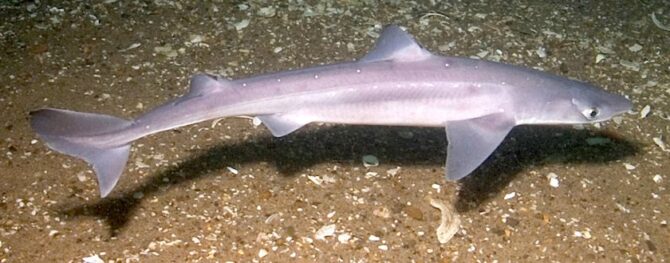
- Scientific Name: Squalus acanthias
- Classification: Chondrichthyes
- Habitat: Atlantic and Pacific Coast
- Diet: Carnivores
- Conservation Status: Not threatened
Unlike the other types of sharks known to attack humans, these spiny dogfish do not attack human beings, but their dorsal spine is coated with venom, which is moderately toxic to humans.
Some spiny dogfish have the longest gestational period, even competing with the elephants.
They feed on smaller sharks and can live for up to 20 years. Avoid deep inshore water lest you run the risk of meeting them.
8. American Alligator
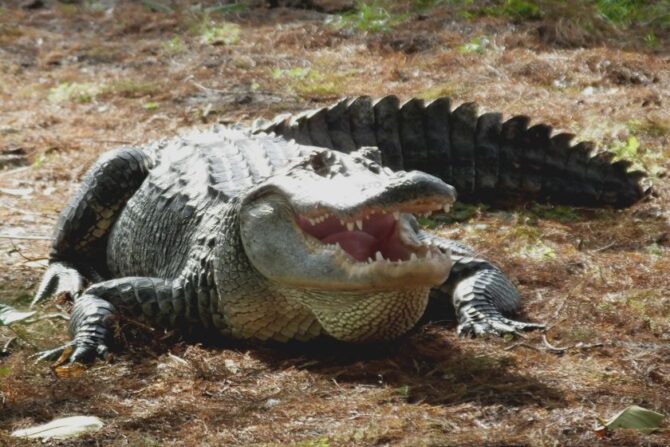
- Scientific name: Alligator mississippiensis
- Classification: Reptiles
- Habitat: Lakes, Freshwater swamps
- Diet: Carnivores
- Conservation: Least concern
Alligator attacks are not common, although they are devastating when they occur.
Alligators eat tiny fishes and birds and utilize their tails for defense and swimming.
They dread humans as much as they fear being provoked. Avoid going anywhere these alligators are present.
These reptiles could be found in unsuspecting places.
9. Red-tailed Hawk
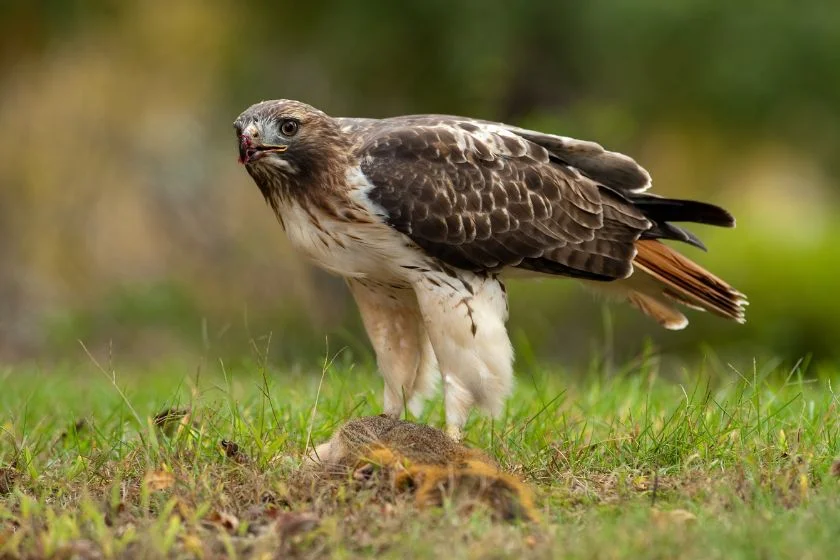
- Scientific Name: Buteo Jamaicensis
- Classification: Birds (Aves)
- Habitat: Mountains, woodlands, roadsides
- Diet: Carnivores
- Conservation: Not Endangered
Hawks use their high intelligence and surprise factor to attack the target. Their brick-colored tails are what they are known for.
Their life usually ends in 10–15 years. They have great vision and are most active during the day.
The male and female red hawks are good at co-parenting.
If you mistakenly enter their territory and they sound the warning, please do well to leave before they can become aggressive and attack you.
10. Black Widow Spider
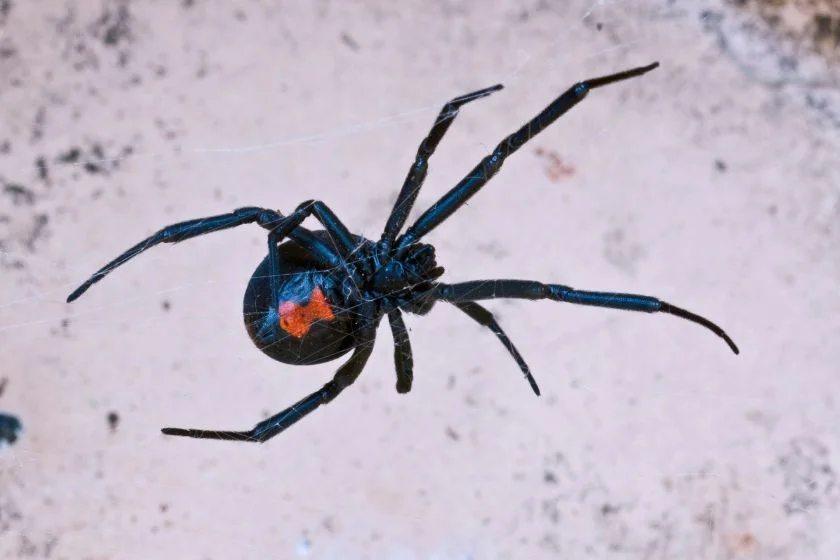
- Scientific name: Latrodectus
- Classification: Arachnida
- Habitat: Woodpiles Crevices
- Diet: Carnivores
- Conservation: Not extinct
Like other spiders, they produce webs, the black widow is 10 times more vicious than the rattlesnake, and it’s only the female that is poisonous.
If bitten by a black widow, you can get first aid (washing the affected area with soap, adding ice for the swelling, and taking pain medication) before you seek medical attention.
Some people have adverse reactions like vomiting and swelling around their back, chest, abdomen, etc.
11. Hornets and Wasps

- Scientific Name: Vespa
- Classification: Insects
- Habitat: Urban environment
- Diet: Carnivores
- Conservation: Least concern
There is no difference between the hornets and wasps, except the hornets are bigger than the wasps.
Hornets eat the sap of a tree, fleas, insects, etc. Hornets are very dangerous because of their stings.
Either you use hot or cold water to reduce swelling in case you get stung by this creature.
Chesapeake Bay Wildlife Safety Tips
Exploring the wildlife in the Chesapeake Bay comes with some do’s and don’ts; you should adhere strictly to them for your safety. Ensure you observe the following guidelines.
They include;
- Put a call across to the Chesapeake Animal Service if you spot a sick or wounded animal. Don’t try to nurse the animal yourself. You might not have the required expertise, which might worsen its condition.
- Let fledging birds be. When young birds leave their nest to learn how to fly, they might seem in bad condition as they hop around and beckon their parents. Please don’t attempt to nurse or carry them. Let them be; they are developing an important quality of self-dependence at that stage.
- If you own a pet, do not let your pet mingle with the wildlife, do not let it fight the wildlife. Always remember to vaccinate your pet against rabies.
- Do not take whatever you find along with you. You might find beautiful flowers, plants, butterflies, rocks, or other items out in the wild; always leave them behind where you found them.
- Be careful when setting up campfires. Carelessness with campfires could result in a catastrophe that could damage the forest and negatively impact the animals. Always monitor your campfire at all times.
- Always admire the animals from a long distance, do not get too close or try to feed or touch them. They might become aggressive.
Frequently Asked Questions
Are sharks in the Chesapeake Bay?
Yes, Chesapeake Bay is filled with deadly sharks, with the bull shark being the most aggressive of all species in the bay of Chesapeake.
Are alligators in the Chesapeake Bay?
There have been multiple reported sightings of alligators in the Chesapeake Bay and surrounding cities since 2015, especially during the summer.
What is the biggest animal in the Chesapeake Bay?
The largest animal in the Chesapeake Bay is the sturgeon. This fish can weigh up to 3,462lbs and grow to over 24ft in length.
Conclusion
You’re in for a surprise if you visit the Chesapeake Bay region.
Left alone, the creatures described above are gentle and lovely and play an important role in the ecological balance.
If you take a few precautions and leave these most dangerous animals in Chesapeake Bay alone, they will not try to attack you.
However, problems may arise, and you must be prepared to respond and take corrective measures.
Also See: 11 Most Dangerous Animals In The Gulf Of Mexico






